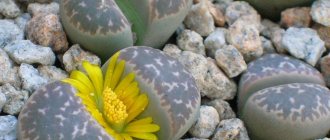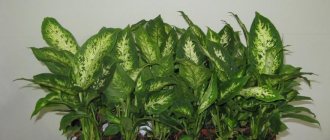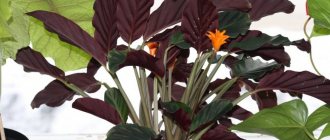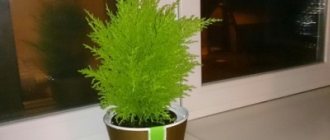Nature amazes with the variety of amazing plants and evidence of this is one of the predators of the world of flora - the insectivorous sundew (Drosera), which has rarely been seen in its natural habitat.
However, recently it has become popular to grow this unusual crop at home and, oddly enough, sundew feels good at home and, with proper care, can live for more than one year.
This extremely interesting plant belongs to the sundew family (Droseraceae). The name of the genus comes from the Greek “droseros”, which means “covered with dew”, since the drops of sticky secretion on the glandular hairs look exactly like drops of morning dew sparkling in the sun. People call it “solar dew” or “sundews”.
Most of the 188 species of the plant grow in Australia, New Zealand and South Africa, about 18 species are native to South America and several species of the plant can be found in the cool and cold climates of the Northern Hemisphere.
They survive due to special wintering basal buds that can withstand low temperatures. A typical representative of temperate latitudes is the round-leaved sundew.
Botanical description
Sundew belongs to the family of the same name.
The name of the genus contains the Greek word “droseros”, which means “covered with dew” , since drops of sticky secretion can be seen on the glandular hairs of the flower, reminiscent of morning dew sparkling in the sun.
The sundew family includes more than 200 species of plants native to South America, New Zealand, Australia, and South America. Several species of sundews are also found in the northern hemisphere.
Sundews living in the tropics are much larger in size than their northern neighbors. For example, the stem of the giant Australian sundew reaches 1 m in length. And the royal sundew, which grows in South Africa, easily digests toads and snails.
Drosera is a perennial insectivorous herbaceous plant, most often without a stem , but with a creeping rhizome. The root system is well developed, but weak. It is only necessary to absorb water and keep the plant on the soil surface.
Rosette basal leaves are covered with reddish hairs with sticky tips.
By leaf color:
- reddish;
- yellow;
- light green;
- green.
By form:
- small and round;
- long, narrow or wide.
The leaves lie on the ground or sit on petioles, the length of which is 2-15 cm.
On the upper part of the leaf blade there are 25 cilia , with the longest located at the edge.
Sundew blooms in late spring - early summer (2-3 months). The flowers are inconspicuous, small (usually 1.5 cm, but there are species with flowers 4-5 cm in diameter), collected in a brush or panicle.
They are located on long peduncles to prevent pollinating insects from becoming trapped. In most species, flowers open only in the sun.
Fruits in the form of a box with a large number of small seeds appear in August. When the seeds are fully ripe, the fruit opens into 3 parts, they scatter on the soil and germinate successfully a year later.
Plant subspecies
To date, just over 150 subspecies of this predatory flower are known. The most famous subspecies:
- Round-leaved - grows in temperate swamps. Latin name: Drosera rotundifolia. The leaves are oval and grow on elongated petioles. They reach no more than 2 cm in diameter. They look like miniature plates. The upper part of the leaves has villi.
- Cape - the most beautiful of all subspecies. Latin name: Drosera capensis. Endowed with very short branches. The leaves are graceful and thin. They grow on elongated petioles. The color of the leaves is emerald-amber or burgundy-brown. The plant's eyelashes are burgundy. Once the insect is trapped, the leaves of the plant are curled into a small roll. The plant is endowed with beautiful flowers.
- Intermediate - the rarest subspecies.
- Longifolia - has narrow, elongated leaves. Grows in swamps and overgrown rivers. Sometimes it is called "English".
Read more about the varieties of carnivorous plants in our article.
Where does it grow?
The sundew's habitat is peat bogs of various continents, often growing adjacent to shrubs of the heather family.
In the subtropics, the plant grows all year round , while in cooler conditions the flower enters a dormant period and overwinters under the cover of snow. To survive severe drought, members of the family growing on the Australian continent can see underground thickening of roots in the form of a tuber, which helps to cope with unfavorable natural conditions.
Wintering period
During the cold season, wintering buds . As they grow, they go deeper into the forest moss. If you come to a swampy area where sundew grows after frost, it will be impossible to see this plant. The sundew will be completely hidden under forest moss .
Thanks to this type of growth, the moss protects the flower from frost, and the sundew successfully survives the cold.
In the spring, when the temperature becomes stable and the first sun appears, the first shoots grow from the wintering buds of this representative of the flora.
How and what does sundew eat?
The fact that a plant is a predator does not mean that it depends only on receiving live food. After all, if there are no insects, the flower feeds like an ordinary plant.
To catch prey, the plant first attracts the insect with the shine of a dew-like droplet, which is actually a sticky digestive enzyme. When the victim touches the leaf, it sticks.
After 10-20 minutes, the eyelash to which the victim is stuck bends towards the center of the leaf. Neighboring cilia also bend, causing the insect to suffocate. At the end of everything, the edge of the sheet plate is bent and the trap slams shut. This plant reaction occurs only to protein foods , while the flower does not react to other substances.
During the digestion of food, the cilia secrete special enzymes that are similar to pepsin (animal stomach juice). With their help, protein is broken down, allowing the plant to eat lunch. When the process is completed, the leaf opens and only the remains of the victim (chitinous shell) can be seen on it. After this, the cilia straighten, become covered with a sticky secretion resembling dew, and again lure a new victim. Sometimes the sundew takes several days to digest its food.
Favorite delicacy of carnivorous plants?
HamstersFlies
Growing sundews from seeds
For propagation, take fresh seeds, place them in a container on moist sphagnum moss and cover with a lid. The container is placed in a warm and bright place. In order for the seeds to germinate faster, the temperature should be 25 degrees.
Freshly collected seeds sprout within a month, and store-bought seeds sprout within six months. When the young plants have four leaf blades of their own, they can be planted in pots.
It should be noted that the first leaf blades of the plant do not have a carnivorous function; they will master this functionality only after four months.
Varieties and photos
There is a wide variety of varieties of this exotic predator that grow successfully in a variety of conditions. Below are photos, names and descriptions of sundew varieties suitable for propagation and care at home:
Round-leaved
This is the most common winter-hardy sundew species, which is found in peat bogs in the temperate climate zone of Russia, Asia, America and Europe. When growing a wild specimen in potted form, the plant must be supplemented with the soil in which it grew.
The round-leaved sundew has rounded basal leaves on which there are red cilia that secrete sticky mucus.
The length of the flower stem reaches 20 cm.
The plant blooms in mid-summer, blooming small white flowers. The fruits ripen at the end of summer and are a single-locular capsule. Round-leaved sundew reproduces by seeds, which are collected and sown in greenhouses, laid on the surface of moist peat soil.
To survive the cold season, the plant forms special wintering buds in advance, which are hidden in sphagnum moss. When spring comes, the sun warms up and the snow begins to melt, annual shoots appear from the buds. The photo below shows Sundew Roundifolia:
Cape
This is the most beautiful and unpretentious species of predator, which is most often grown at home. Cape sundew grows all year round, easily adapting to any living conditions.
This plant reaches a height of only 12 cm and is characterized by beautiful, elongated lanceolate leaves of a light green or reddish hue. The leaves sit in a dense rosette and on each of them there are red tentacles with a sticky secretion. The Cape sundew takes several days to digest its food. The flower stalks reach 20 cm in height and are crowned with inflorescences of bright pink flowers. You can see what the Cape Rosyanka variety looks like in the photo below:
English
This type of sundew is common in Ukraine, Belarus, Russia, the Caucasus, Central Asia and the Hawaiian Islands, choosing damp, sandy places and sphagnum bogs.
The English sundew reaches a height of 7-25 cm, the length of thin lanceolate leaves, located on long petioles and directed upward, reaches 10 cm. The plant blooms in mid-summer, producing white flowers. The fruit is a single-locular capsule containing grayish-brown seeds. In the photo below is the English Rosyanka variety:
What does Sundew eat?
The structure of the trap leaves of the flower is quite original, corresponding to the type of nutrition of the Sundew. Their entire surface is covered with numerous hairs. At the tip of each hair, a drop of dew sparkles in the sun, which is not dew at all, but sticky, sticky mucus, which with its aroma attracts the attention of small insects and deprives them of the opportunity to escape. Having landed on a flower, flies, mosquitoes, midges instantly stick. Of course, they begin to desperately break out of their sticky captivity. But the sundew leaf is unusually sensitive. The lightest touch of a mosquito is enough for all its hairs to move, bending in an effort to cover the prey with sticky mucus and move it to the middle of the leaf. The leaf immediately begins to curl up around the victim and, with the help of enzymes located in the center of the leaf on the digestive villi, paralyzes, immobilizes the prey and begins to digest it. The digestion process lasts for different types of sundews from several minutes to a week, after which the petals unfurl again and are covered with sparkling dewdrops. The flower freezes in anticipation of its next victim.
Interestingly, the plant does not react in any way when small debris, sand, earth, pieces of bark or raindrops fall on the leaf. It has been scientifically established that Sundew tentacles only respond to organic objects that have nutritional value.
In the wild, Sundew settles in swampy or sandy places where the soil is poor in nitrogen. Therefore, having caught and digested the next victim, the plant makes up for the lack of nitrogen and other minerals, such as magnesium, phosphorus, sodium, potassium. In Russia there are only three species of Sundew: round-leaved, intermediate and English. They grow in the temperate climate of the European part of the country, the Far East and Siberia. They withstand cold winters by forming special, tightly folded, overwintering buds. Such buds can be stored in an airtight bag with sphagnum moss for up to five months.
This may be interesting: Sundew - care at home
Care
Among all carnivorous plants, sundew is best suited for growing at home, since this plant is easier to care for for beginners. Despite the fact that the flower is demanding on lighting and temperature, at home it is possible to create the most suitable conditions for it. To do this, it is best to plant English sundews in glass vessels or special semi-automatic aquariums. Here the plant will be able to enjoy the high humidity it needs and will not suffer from changing conditions.
Lighting
Bright lighting is the most important when growing sundews, which cannot live even with slight shading. But at the same time, plants cannot tolerate direct sunlight , so they need to be placed on bright, sunny windowsills with diffused lighting. Artificial lighting alone will not be enough for them, but it is welcome as additional lighting.
To compensate for the lack of light in winter, sundews should be placed on southern windows at this time of year, and during active growth - on a western or eastern window.
In winter, the duration of illumination should not be less than 8 hours, and in the spring-summer period - 14 hours.
If the sundew does not have enough light or the lighting is unstable, the plant will quickly tell about it. First signs:
- loss of color;
- change in leaf texture to soft and limp.
The leaves should not be allowed to dry out; the sooner the sundew’s lighting is normalized, the better.
Temperature
Almost all types of indoor sundews feel good at a temperature of 18-23°C. When purchasing a plant, you need to ask in advance what temperature conditions the flower is used to and adhere to these recommendations.
Sundews cannot be grown at the same temperature all year round. During the rest period, it must be reduced to 8-13°C, and an increase of more than 14°C is unacceptable.
The exceptions are the Alice and Cape sundews, which can tolerate a period of rest in the warmth if the lighting regime does not differ from summer. The minimum temperature for heat-loving plants is 7°C, and for cold-resistant plants – 2°C, but it is still better not to allow temperatures to drop below 8°C.
In summer, the plant can be taken out into the fresh air , avoiding drafts and protecting from direct sunlight.
Humidity and watering
Sundews are moisture-loving and cannot tolerate even short droughts. Therefore, it is necessary that the moss and soil contain a sufficient amount of moisture without drying out even in the middle part of the substrate.
It is best to water the flower from below, pouring water into trays, which is drained after some time. Each watering is combined with spraying the soil surface to prevent the top layer of the substrate from drying out.
In the spring-summer period, you need to water the plant once every 3 days, while in winter it is enough to do it once a week, preventing the substrate from drying out.
In regions with high temperature and humidity, sundew can also be grown outdoors .
However, after rain it is necessary to drain excess water from the pot so that the roots do not rot. Sundew feels good only in acidic soil, poor in minerals. To achieve this, you need to use distilled or rain water for irrigation. If you use tap water, you need to draw it in advance and leave it for 1-2 days so that the chlorine settles.
Top dressing
Classic feeding of sundews, like other carnivorous plants, is not carried out. Additional food for this flower are insects, which can be purchased at pet stores. In summer, plants can be exposed to fresh air, where they will independently attract insects (flies, midges, ants).
If there are no insects in the room, then the standard feeding is 2-3 flies per plant , which is enough to give once a week. In winter you can rarely feed. 1 time per month. During this period, the plant stops growing, but does not die.
The flower should not be fed with insects that are too large. The victim can escape, fly away, and the sheet will remain damaged.
Transfer
The sundew is replanted as needed, when the previous container becomes too small for the plant.
Moreover, it is best to choose the classic timing of transplantation (February, March), until the flower “wakes up”. To grow sundews, use wide, flat and low containers with drainage holes, no more than 8 cm in height.
Priming
Different types of soil can be used to grow sundews, but the most popular is peat moss (crushed sphagnum moss) . Before use, it must be washed to avoid causing mold on the plants.
You can also use the following types of soil:
- perlite – a light-colored substrate is used to retain water and allow roots to grow better (you can mix equal parts of peat and perlite);
- coconut fiber - a peat substitute obtained from the husks of coconut shells (before use, you must thoroughly rinse them to remove salts);
- aquatic plant soil - consists of small pieces of ceramic chips that absorb moisture well and act like perlite.
Any soil and material that will be used should always be washed to get rid of salts and minerals that could harm the plant.
Use of Sundew for medicinal and economic purposes
Sundew herb, collected during its flowering, is used for coughs, bronchitis, including whooping cough. It has been proven that it contains a substance such as plumbagon - an antibiotic that helps in the fight against microbes and pathogenic fungi - streptococci and staphylococci. It is used by homeopaths to prepare nutritional supplements. Externally, sundew juice is used to destroy warts and old calluses. For this purpose, young, freshly picked leaves are used. The inner part of the leaf, where the glandular hairs are located, is used to wipe warts or calluses. After several procedures they disappear. And decoctions of dry sundew leaves are used as diuretics and diaphoretics, for fevers, and for eye diseases. We draw your attention to the fact that not fresh leaves are used for decoctions, but dry raw materials. It is best to harvest it in the summer, during the flowering period, although it is possible during the entire growing season, as long as the Sundew is above the soil surface. It is better to dry using dryers at a temperature of 40 degrees. But it is also possible in a well-ventilated area. Store in cloth bags for no more than two years.
Infusions are recommended to be drunk for asthma, atherosclerosis, diarrhea, dropsy, dysentery, and also for headaches. They are prepared like this: 1 tsp. dry sundew herb is poured with 1 cup of boiling water. Leave for one hour, strain and squeeze out the herb. The resulting solution is consumed after meals 3–4 times a day, 1 tbsp. spoon. It is important not to exceed the indicated doses so as not to cause vomiting or digestive system upset.
Pharmacies sell ready-made alcoholic tinctures of Rosyanka for the treatment of diseases of the upper respiratory tract. You can prepare an alcohol tincture yourself in a ratio of 1:10. Take 10 g of dried sundew herb and 100 ml of 40% alcohol or vodka. Leave in a dark place at room temperature for 10 days. Strain. After which it is used as a pharmaceutical drug. Children are given 10 drops diluted with water, 3-4 times a day. Adults – 15 drops in a glass of water 4 – 5 times a day.
But it is important to know that all parts of the plant are poisonous. Self-medication is dangerous. Any failure to comply with the dosage risks poisoning. Therefore, before treating diseases with any parts of Sundew, consult a specialist.
In the North, Rosyanka is used for steaming milk storage containers. Over time, milk does not store well in jars and begins to sour quickly. Then the sundew with a small amount of water is placed in a jug. The jug is placed in a Russian oven and steamed for some time. The enzymes that are found in the leaves of Sundew dissolve all organic substances remaining after the milk has soured and penetrated deep into the clay pores of the jar. After steaming with Rosyanka, milk in such a jug is again stored for a long time and does not sour.
In Italy, Rosyanka is used in the preparation of Rosolio liqueur.
Reproduction
Sundew is propagated in several ways:
Cuttings
A leaf is cut from the mother plant and kept in moist sphagnum moss in a greenhouse. Rooting and the appearance of young sprouts wait 2 months, after which the flower is transplanted into a pot. The cuttings can also be rooted in a container of water.
How to grow from seeds?
The collected seeds are sprinkled on the surface of a mixture of peat and sand, then sprayed. Cover with glass or film and keep for 3-5 weeks in bright light and temperature +25°C . They dive when four leaves appear.
Dividing the bush
The rosette extending to the side is separated from the mother liquor and planted in a separate container.
General information
The culture has a thin or thickened herbaceous stem with leaf blades collected in a basal rosette. On the surface and edges of the leaves there are glandular hairs that secrete a sticky substance similar to dew. It is thanks to this feature that the plant was called sundew.
More than a hundred varieties of this plant predator are known in botany, but only Cape sundew can be grown at home. It is found in the home collections of flower growers due to its unpretentiousness, ease of care and exotic appearance.
Diseases and pests
Sundew is practically not affected by pests, only spider mites and aphids. For spider mites, Actellik is used. When an aphid attacks a plant, the flower stops growing and its leaves and stems become deformed.
Diseases on sundew occur only with improper care:
- Gray rot - first remove all affected areas, and then the plant is treated with fungicides.
- Root rot - the stem and leaves turn black, plant growth slows down - caused by low temperatures and waterlogging of the soil. To save a flower, its rotten roots are cut off, and the plant is transplanted into a disinfected container with new soil.
- There is no sticky secretion on the leaves - it occurs when the soil is unsuitable and the moisture level is low. This can be corrected by replacing the soil and increasing the humidity.
How to understand that a plant is uncomfortable
Look at the sundew leaves. If there are no droplets or they are barely noticeable, the plant suffers.
1 / 0
This is what a leaf looks like with virtually no droplets
2 / 0
And this is a healthy sundew leaf
The most common reason is lack of moisture. Make sure the soil does not dry out.
Another possible option is not enough light. Make sure that the place for the predator is chosen correctly; it is not in the shade or too far from windows.
Also, sundew leaves may remain without droplets in very hot weather. In this case, all you have to do is wait.
Find out the secrets











